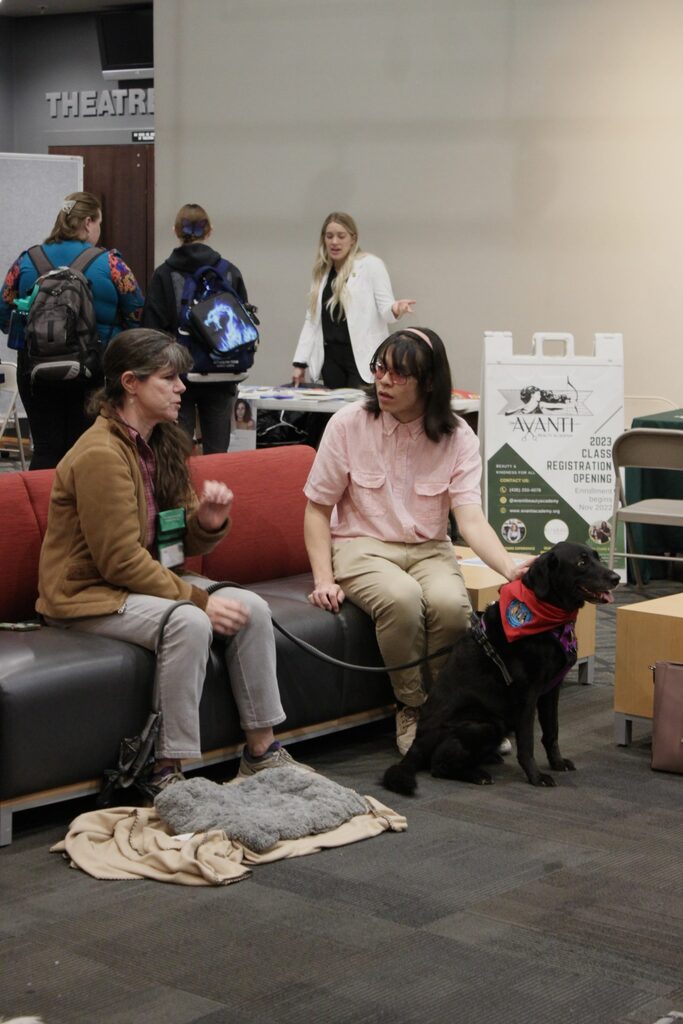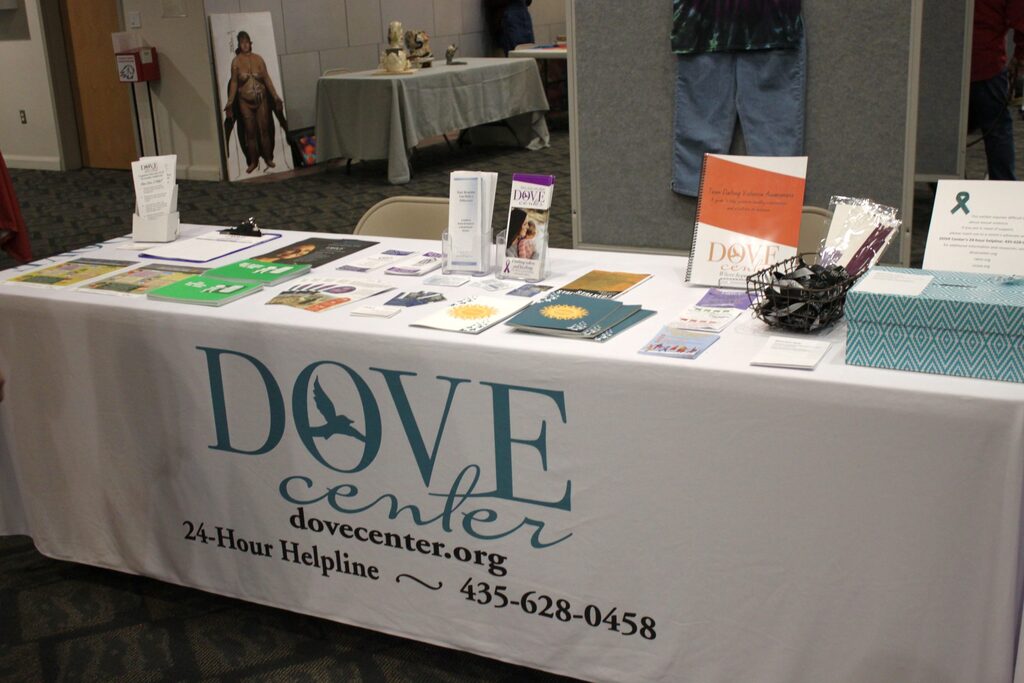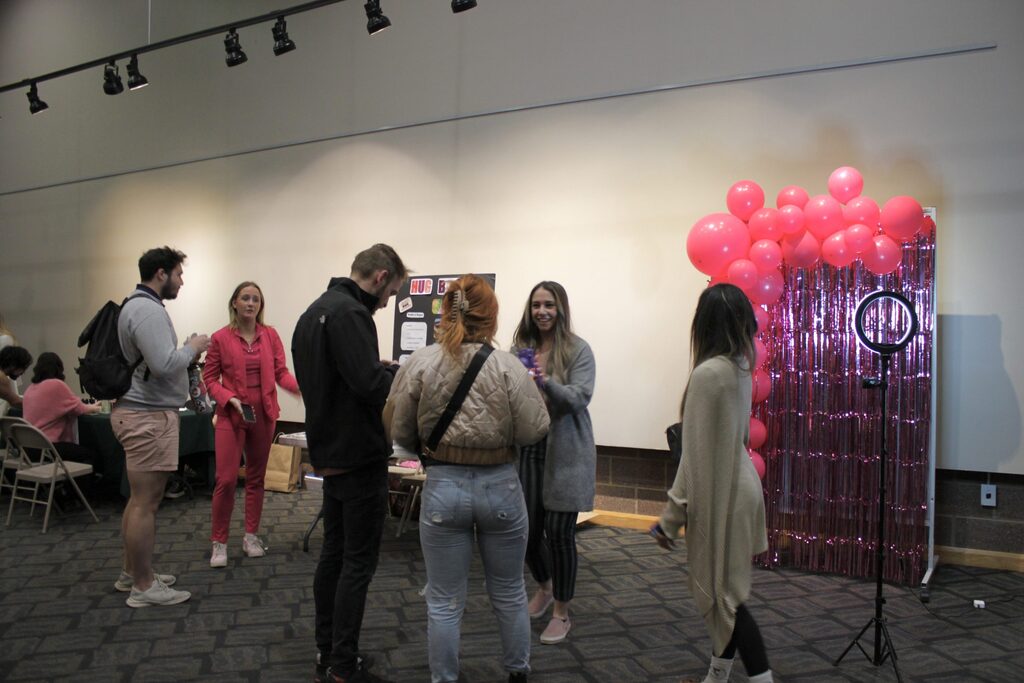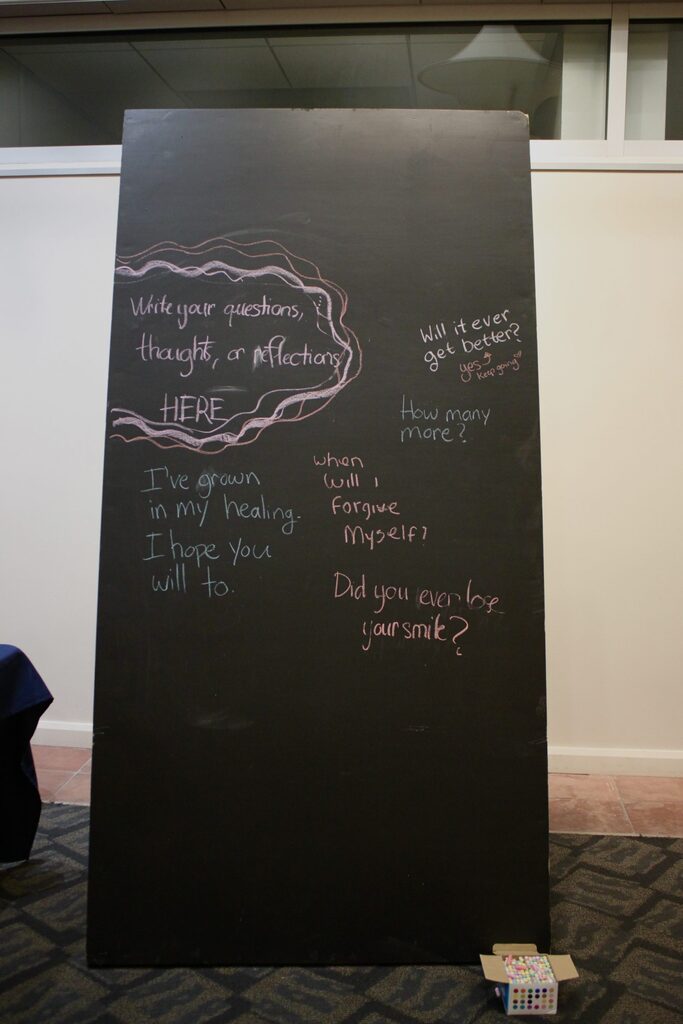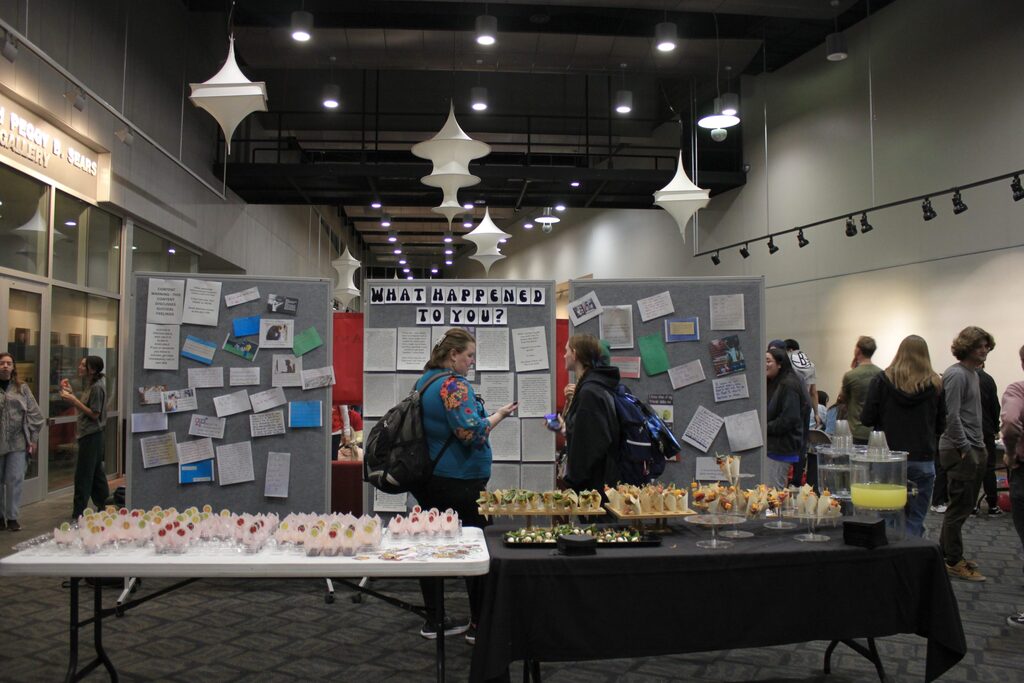The Vagina Project – the multidisciplinary event that addresses issues under the topics of gender, sexuality and mental health – is for students as well as members of the community.
The project is based on The Vagina Monologues, a movement that has been around since the late ‘90s. It originated as a play, and now it has developed into an annual event in cities and colleges around the world. The Vagina Project is St. George’s version of the monologues.
The purpose of the project is to provide an outlet for discussion – around topics such as gender and sexuality – in an academic setting. It provides individuals the opportunity to share their stories and “Be Seen, Be Heard.” This event breaks stereotypes by normalizing discussions around these topics.
For its sixth year, on Feb. 9, the theme was “Be Seen, Be Heard.” Dannelle Larsen-Rife, co-founder and co-adviser of the project, said, “I teach quite a lot within psychology interpersonal neurobiology, and as social animals, it’s imperative for our mental and physical health from the time we’re born on that we be seen and be heard.”
Larsen-Rife said donations have not been part of the project in past years. However, this year, the donations will go toward the Student Resource Center. Donations gathered include feminine hygiene products, makeup and other items for women.
Artwork and monologues submitted primarily by students were displayed and read during the event. The event featured a loneliness booth where attendees were able to sit and have a conversation with other individuals.
Ives Hong, a sophomore psychology major from Saigon, Vietnam, is a member of the NiRD lab. The NiRD lab, under Larsen-Rife’s direction, contributed to putting together The Vagina Project.
“I have a lot of pride in this project,” Hong said. “It actually means a lot to me. I’m all smiles this entire day. I’m so happy about it.”
Hong said this event is essential to emphasize the importance of sexual education/health, women’s issues and mental health. He said he hopes for future years to be “bigger” as the project has so much in store for it.
Therapy dogs, a hug booth and a nail painting station were all in the lobby of the Dolores Eccles building. A “What Happened To You” wall featuring stories submitted by anonymous individuals was a huge eye-catcher. Refreshments were also served.
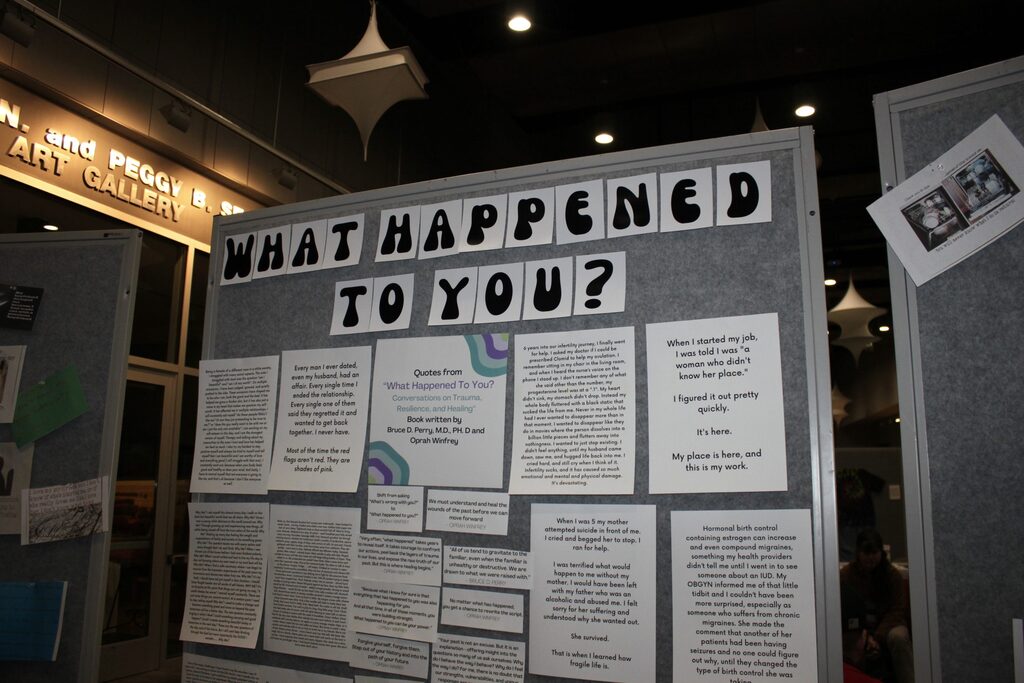
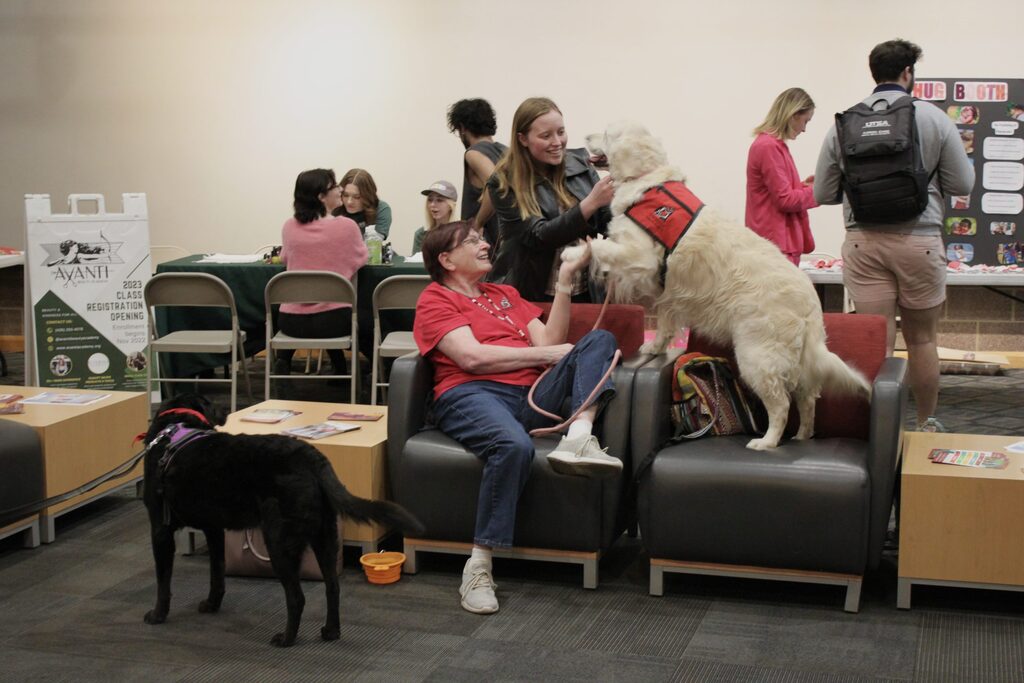
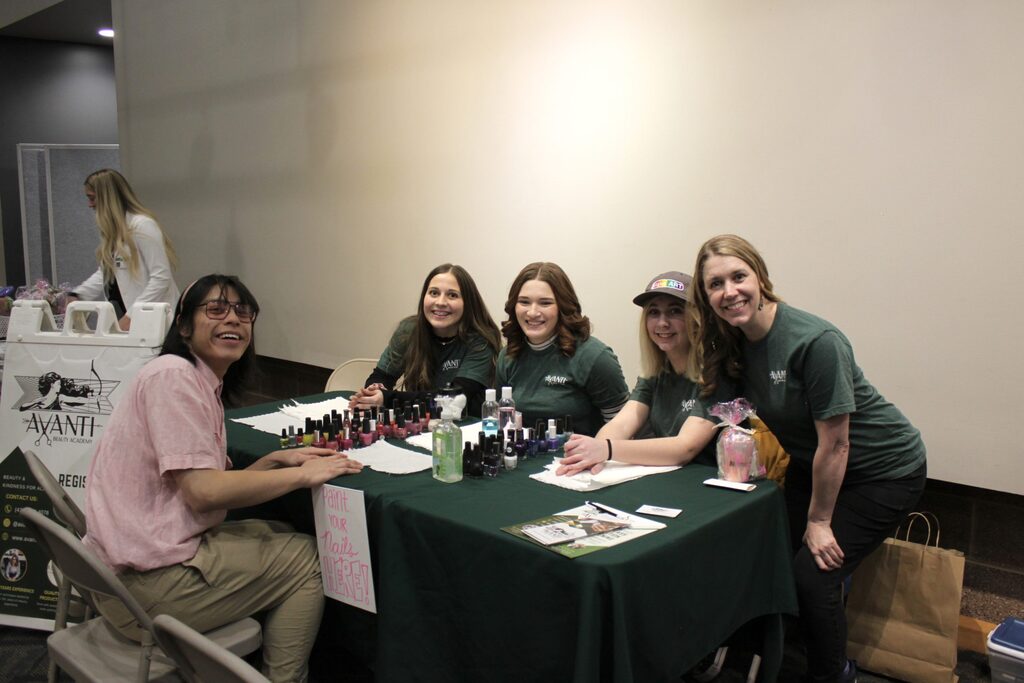
The “What Were You Wearing?” exhibit featured replicated clothing of rape victims. The exhibit introduction said the purpose is to dispel misconceptions about rape, including the question that seems to be commonly asked: What were you wearing?
“This reflects faulty reasoning that somehow the victim is to be blamed and the perpetrator is to be excused,” the introduction said. “The survivors who participated in this project reflect the truth about who is targeted by sexual predators: people of all genders, ages, sizes, races and economic status.”
In the Black Box theater, a program was conducted that consisted of informational speeches, personal experiences and mindfulness practices.
Professor of Biology Curt Walker spoke on the sex differences in the brain. Amanda Scott, assistant professor of English, spoke on welcoming transgender women into women’s spaces.
KerryAnn Humphrey, owner of Unity Health and Wellness, conducted a mindfulness activity that consisted of deep breathing. Psychology students from the NiRD lab read monologues of experiences from anonymous individuals.
Carmyn Hardisty, a sophomore integrated studies major from San Diego, California, is a co-founder of the Mindfulness through Meditation and Exploration club. The newly created club was one booths featured at The Vagina Project.
“We want students to be aware that there is a student-based mental health resource here on campus,” Hardisty said. “We are a space that is trying to give out those resources, be more relevant and more accessible.”
The Vagina Project brought about its purpose: breaking stereotypes and bringing awareness to women’s issues.


